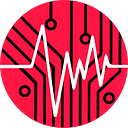Member-only story
Dyssynchronies between inspiratory attempts of the patient and the inspiration by the ventilator could cause ventilator-induced lung injury (VILI). It is therefore important to recognize these dyssynchronies and act accordingly. On this page, you’ll find a quick overview of common dyssynchronies and how to treat them.
- Patient wants to inhale: neural signal travels to inspiratory muscles, inhalation begins
- Ventilator is immediately triggered as a result of the patient’s respiratory effort (triggering) and the ventilator immediately provides the inspiration
- Patient wants to exhale → ventilator opens the expiratory valve immediately (cycling)
- Exhalation is finished for both the patient and the ventilator; a new inhalation is possible
Patient ventilator dyssynchronies
There are 6 patient-ventilator dyssynchronies you should be able to recognize and treat. These are Delayed triggering, Ineffective triggering, Auto-triggering, Reverse triggering, Premature cycling and Delayed cycling. Read on below!
